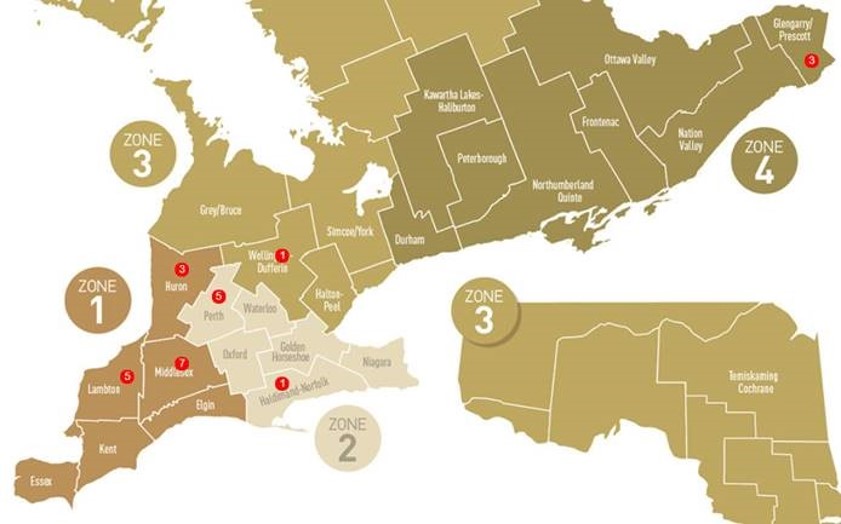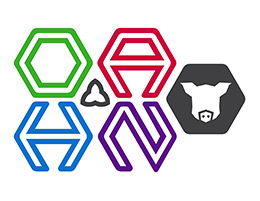Ontario Animal Health Network (OAHN) Swine Network Quarterly Producer/Industry Report
African Swine Fever (ASF) Surveillance Update: CanSpot ASF pilot project launch
Dr. Christa Arsenault provided an overview of the newly launched surveillance pilot project in CanSpot ASF:
- Canada has a comprehensive surveillance program in place for the early detection of foreign animal disease e.g. African Swine Fever (ASF) virus. The CanSpot ASF will enhance this surveillance with several tools in a phased approach.
- The goal of ASF surveillance is to protect the Canadian commercial swine sector from the adverse effects of ASF on production and trade. The primary objective of surveillance in the domestic swine population is to enhance our ability to detect ASF rapidly should it enter Canada. A secondary objective is to support the claim that the domestic pig population is NOT infected with ASF.
- The first tool being launched as part of the pilot project is the “Risk-based early detection testing” with the goal to improve pathogen detection. This pilot is similar to surveillance recently launched in the U.S.A.
- The pilot project is aimed to enhance the diagnostic testing of ASF in Canada. The Canadian Animal Health Surveillance Network (CAHSN) laboratories will run routine diagnostic rule-out tests where ASF is NOT suspected.
- Certain diseases/conditions may mask the clinical signs of ASF and delay detection. Herds with a history of these diseases/conditions, or cases with a compatible clinicopathological presentation are eligible for testing.
- There is no change for the cases where ASF is suspected and these must be immediately reported to CFIA.
- The CanSpot ASF will add other surveillance tools such as risk-based surveillance from abattoirs, increase veterinary presence and sampling on small scale swine farms and samples from wild pigs.
- Any case submitted for pathology to the Animal Health Lab in Guelph may be tested for ASF if there are:
- Sufficient information to trace the animal (Premises ID or animal location)
- Appropriate tissues are submitted and include some or all of the following: whole blood, body fluids and sections of tonsil, spleen, kidney, lymph node and terminal ileum.
- Both herd practitioners and pathologists can initiate this new ASF rule-out testing.
What happens if the rule-out testing (real-time PCR) is NEGATIVE?
- If the sample/animal is ASF-negative, the laboratory will report this result as per usual protocols. The diagnostic test-result will be included in the CanSpot ASF reporting (pilot period or annual reporting).
- No movement restrictions will be placed on the farm.
What happens if the rule-out testing (real-time PCR) is POSITIVE OR SUSPECT?
- The sample/animal yielded a positive or suspicious test-result but without further confirmatory testing and epidemiologic investigation the true status of this case in UNKNOWN. This result could be a false positive result or a true case of ASF. The ASF PCR test is an excellent test so these results will be taken seriously.
- The approved laboratory will immediately inform the herd veterinarian and the local CFIA district office where the herd is located. If the approved laboratory is conducting the test for another laboratory, they will immediately notify that laboratory and the original laboratory will be responsible for notifications.
- The CFIA district office will;
- Check the health of the animals on the premises together with the herd veterinarian.
- May collect additional samples from pigs on the premises and coordinate collection and shipment of samples to the NCFAD in Winnipeg.
- Complete a risk assessment. If the risk assessment finds no evidence of ASF, the CFIA will place a quarantine to stop movement of swine off the premises until the NCFAD confirmatory testing is completed (estimated 48 to 96 hours). If the risk assessment finds a suspicion of ASF, the CFIA will place a quarantine to stop movement of swine, and may make a declaration of infected place to stop other traffic on and off the premises until the NCFAD confirmatory testing is completed (estimated 48 to 96 hours).
OAHN Swine Small Herd Postmortem Project
Dr. Josepha DeLay provided an update on the OAHN Swine Small Herd Project:
- The goal of the project is to identify disease problems in these herds through PM exams, and to expand lines of communication to small scale swine herds in order to increase awareness of foreign animal and zoonotic diseases (diseases that can transfer from animals to humans).
- The participating herds need to have 50 sows or less or market less than 1000 market hogs per year. Herds must have a premises identification (PID) and a herd veterinarian in order to enroll in the project. The producer must agree to complete a herd management survey.
- If you are or know of any small scale swine herds that could be enrolled in this project please contact Dr. DeLay at jdelay@uoguelph.ca. Enrolling in this project provides free laboratory testing to participants.
Porcine Epidemic Diarrhea virus (PEDV) in Ontario Update
Dr. Tim Pasma reported that there were 6 new sites detecting PEDV in Q2 that includes a nursery in Glengarry Prescott, a nursery in Huron, 3 grow finish in Perth and Wellington and an additional finisher in Glengarry Prescott. There were no new Porcine Deltacoronavirus (PDCoV) sites reported in Q2. PED positive site detections are reflected on the map below
Image Source:
Swine Health Ontario Website: http://www.swinehealthontario.ca/Disease-Information/PED-Tracking-Map?y=2020
Erysipelas OAHN Project Findings
Dr. Tim Pasma provided an update on the final report findings for the OAHN Erysipelas Project:
- In total 8 cases were received comprising of 25 samples. Eleven samples were collected from clinical cases whereas 14 samples were from processing plants. Only 6 isolates of Erysipelas were recovered from the samples submitted. Three isolates were from clinical cases.
- To compensate for low number of isolates recovered, isolates conveniently archived by the AHL (5) and Gallant Custom Laboratories (3) were also included in the study bringing up the total number of isolates for sequencing to 14. Based on limited data available for each isolate it is likely that isolates originated from 11 different premises. Most of the isolates sequenced were archived isolates recovered in 2015 (1), 2016 (2) and 2018 (5).
- From 11 isolates, 5 did not carry any antimicrobial resistance genes which is good news!
No resistance to penicillin was detected in this study.
How can producers engage in OAHN?
- Read our quarterly producer reports and let us know what you think!
- Discuss the material included in these reports with you herd veterinarian and other swine producers. Help us spread the word!
What to do if you see feral pigs in Ontario…
- OMAFRA is working with the Ministry of Natural Resources & Forestry (MNRF) to put together a wild swine strategy for Ontario. The first step will be to try to identify wild swine within Ontario.
- Please report any wild pig sightings to wildpigs@ontario.ca. The MNRF has also set up a page on iNaturalist at:
www.inaturalist.org/projects/ontariowild-pig-reporting for residents to document any possible wild pigs in Ontario.


